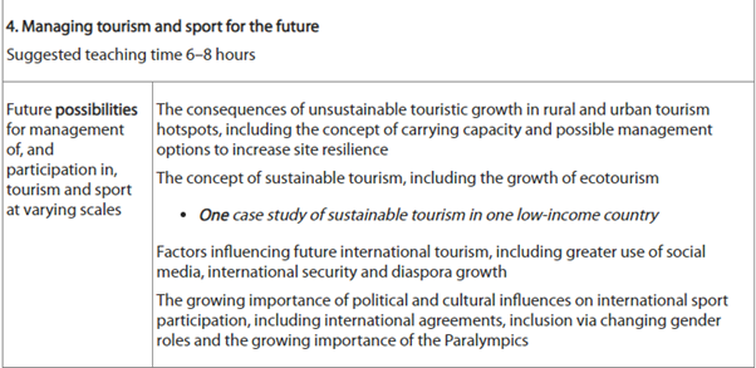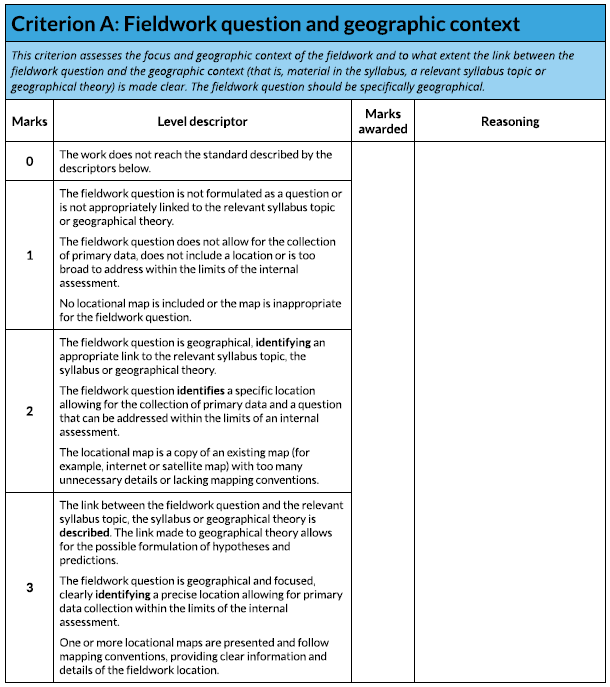Part 1.1 - Fieldwork Question & Hypotheses
3 marks available [combined with geographic context]
Suggested word count of 300 out of the 2500 words [combined with fieldwork question]
Deadline First Draft: Friday 28th June 2024 - 21h00
Suggested word count of 300 out of the 2500 words [combined with fieldwork question]
Deadline First Draft: Friday 28th June 2024 - 21h00
Your fieldwork question is:
To what extent do Sitges and Calafell differ in their cultural and environmental sustainability for tourism?
** Cultural sustainability involves maintaining and preserving cultural heritage, traditions, languages, and identities from being lost over time.
**Environmental sustainability is the ability to maintain the qualities that are valued in the physical environment for present and future generations.
** The aim of sustainable tourism is to meet the needs of present tourists and host regions while protecting and enhancing environmental, social, and economic values for the future.
The aim of the study is to examine the extent to which cultural preservation and sustainable tourism in Sitges and Calafell is being achieved.
Formulating a hypothesis
To help you discuss and conclude upon your fieldwork question you should formulate three hypotheses. You should consider what data you will be collecting and which data sets you can easily graph and map.
Your IA must be related to material in a geographic inquiry topic or sub-topic and its development in the syllabus.
Your Internal Assessment is related to this section of the Leisure, Sport & Tourism - optional theme:
To what extent do Sitges and Calafell differ in their cultural and environmental sustainability for tourism?
** Cultural sustainability involves maintaining and preserving cultural heritage, traditions, languages, and identities from being lost over time.
**Environmental sustainability is the ability to maintain the qualities that are valued in the physical environment for present and future generations.
** The aim of sustainable tourism is to meet the needs of present tourists and host regions while protecting and enhancing environmental, social, and economic values for the future.
The aim of the study is to examine the extent to which cultural preservation and sustainable tourism in Sitges and Calafell is being achieved.
Formulating a hypothesis
To help you discuss and conclude upon your fieldwork question you should formulate three hypotheses. You should consider what data you will be collecting and which data sets you can easily graph and map.
Your IA must be related to material in a geographic inquiry topic or sub-topic and its development in the syllabus.
Your Internal Assessment is related to this section of the Leisure, Sport & Tourism - optional theme:
The Butler Model
|
The Butler Model is a method used to study the evolution of tourism over time and at which stage of the development model a settlement happens to be at this point in time. Tourism is a major source of income for many settlements and those on the Spanish coastline are no exception. Tourism has grown in importance as a major generator of wealth because of three main factors:
(source: Barcelona Field Studies Centre) If you want to find out more about the Butler Model linked to Sitges & Calafell, click here. Start about half way down the page.
|
|
Tourism Planning, Development & Sustainability
The videos below are important to watch if you decide to look at the difference in tourism planning and development between both resorts (first video) or tourism sustainability & growth (second video).
|
|
|
Make sure you have done the following...
- Write your fieldwork title and choose two RQ's
- Write 2 hypotheses, each one linked to a different RQ
- Make a brief preliminary judgment or prediction answering the fieldwork question/hypotheses.
- Explain why the fieldwork investigation was carried out.
- State the area of the syllabus to which your Internal Assessment is related.
Part 1.2 - Geographic Context...
3 marks available [combined with fieldwork question]
Suggested word count of 300 out of the 2500 words [combined with fieldwork question]
Suggested word count of 300 out of the 2500 words [combined with fieldwork question]
Justification of study sites - explain why Sitges and Calafell are good examples of tourist resorts to investigate your hypotheses.
You might want to use the links below show you ages of the buildings in both study sites:
Calafell - Land use map
Sitges - Land use map
A map of the data collection locations used is essential - is it a good locational map as the mark scheme requires.
Advice on the use of maps:
* You must add value to maps you include - just sticking in a photocopied map or a printed map from the internet is of little value unless you have used it as a base map to show other things.
* You must acknowledge the source of the map.
* It needs a title, scale, key/legend and border.
Make sure you do the following...
- Describe where the fieldwork investigation was carried out.
- Include a map - with added value.
- Comment briefly on the geographic context, explaining why and where the fieldwork investigation is to be carried out. This can include relevant spatial, physical, socio-economic conditions and other background information, concepts or characteristics.
You might want to use the links below show you ages of the buildings in both study sites:
Calafell - Land use map
Sitges - Land use map
A map of the data collection locations used is essential - is it a good locational map as the mark scheme requires.
Advice on the use of maps:
* You must add value to maps you include - just sticking in a photocopied map or a printed map from the internet is of little value unless you have used it as a base map to show other things.
* You must acknowledge the source of the map.
* It needs a title, scale, key/legend and border.
Make sure you do the following...
- Describe where the fieldwork investigation was carried out.
- Include a map - with added value.
- Comment briefly on the geographic context, explaining why and where the fieldwork investigation is to be carried out. This can include relevant spatial, physical, socio-economic conditions and other background information, concepts or characteristics.





